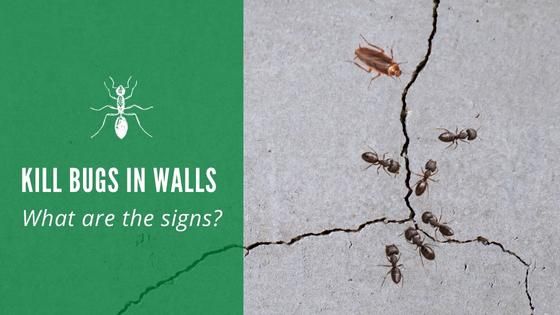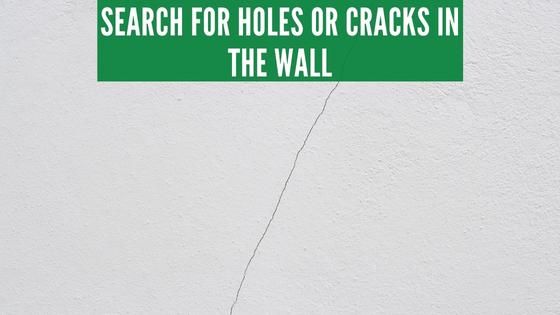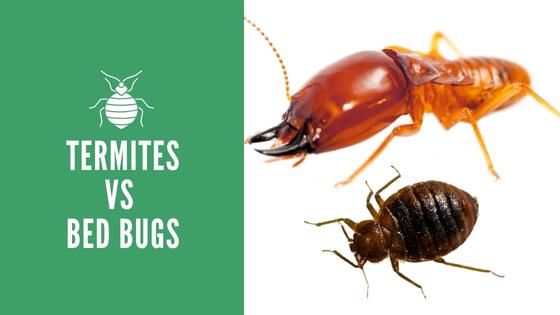Kill Bugs in Walls

There’s no doubt that the thought of having bugs in your bed is pretty disturbing. Yet, there could be something even more sinister lurking in your home. Bugs often get into the walls where they can reproduce and grow into huge populations without you knowing. Watching out for signs of bugs in the walls and learning how to kill them helps you rest easier no matter where you are in the building.
What Attracts Bugs to the Inside of Walls?
Insects don’t care if they are in a bedroom versus the inside of a wall. They are all looking for a safe haven where they can run away from threats and create nests for their young.
It also helps if they might be able to find a food and water source while they’re there. Sometimes, pipes running through walls have small leaks that you might not notice, but they produce enough moisture for an insect to survive on.
Usually, you won’t find human food inside of walls, but a spider might choose to hang out inside of walls where they might get to snack on a cockroach. Termites especially love being in this space since it has all the wood they need to fulfill their dietary requirements.
The location of a wall could also serve as an attractant. Insects might scurry back and forth from outdoor areas to the inside of a building to satisfy their need for cool air, rest, or darkness.
What Bugs Live In Walls?
You can find just about any type of bug inside walls, as you would in the rest of a building. However, certain types prefer the privacy of an enclosed space. For example, most bed bugs typically prefer to stay close to their host, so they don’t usually go roaming around in the walls.
Wood-boring insects are a different story. Termites and carpenter ants are two common bugs that primarily make the inside of walls their home. They can live inside the walls for many years undetected until the damage becomes extensive enough to cause noticeable harm to the property.
Cockroaches, beetles, and other types of insects also like staying in walls where their activity is less likely to be noticed by humans and pets. They often use walls as a bit of a labyrinth where they can roam from one room to another without being disturbed.
Watch for These Signs of Bugs in Walls
Despite their attempts to use your property’s walls for stealthy movements, insects aren’t smart enough to cover their tracks. This means that you can catch invasions pretty early if you know what to look for. The good news is that you don’t have to take a sledgehammer to your walls when you watch these common signs of a problem.
Seeing Bugs Crawl Around Baseboards
You should be worried if you see insects crawling near the wall’s visible parts. While you might not be able to see it, a tiny crack or hole could exist there that allows insects to get inside.
Remember that the hole doesn’t have to be very big. Cockroaches can compress their body down to about half its size to fit through a cre+vice. Tiny insect nymphs can also slide right through a crack that is not much wider than the edge of a coin.
This is one of the reasons why pest professionals often recommend keeping mulch and other insect-attracting materials away from the exterior walls of a building. If you encourage the bugs to come close enough, it’s only a matter of time before they figure out a way to wander inside.
Hearing Scratching or Knocking Sounds
You probably won’t hear one small termite or carpenter ant bumbling around in the wall, but you can imagine what a whole colony of these bugs chewing might do. Wood-chewing insects can create a scratching or knocking sound that you might notice coming from the walls. You can tap on the wall to stir up a colony of carpenter ants, or wasps which can often result in a rustling sound you can hear with your ear up to it.
Noticing Rodent Activity
For the most part, mice and rats would rather eat other food sources, but they can view a lot of bugs as an easy meal. However, the main reason why you’ll want to pay attention to rodent activity is that insects and mice are generally attracted to the same things.
If a rat thinks your house looks great, insects will, too. They also have an even easier time finding an entry point than rodents. Pest technicians often recommend spraying for insects while you are handling a rodent infestation for this very reason.
Finding a Hole In a Wall

When you find a hole in the wall, your instinct may be to close it up. However, you could be trapping insects inside that will keep destroying the interior parts of your property. A visible crack or hole is one that an insect can get through. You’ll first want to make sure that nothing is living inside of the wall. Then, you can move forward with closing it up.
Discovering Droppings and Shed Skin
Bugs also leave debris behind that can help you identify which type of pest is infesting your property. With termites, you might find frass, like little wood pellets that they create as they burrow through walls.
Cockroaches and insects might also molt and leave skin or shell particles behind.
How to Get Rid of Bugs In Walls
The average fogger or spray isn’t just going to magically work its way into the walls and do its work. Instead, you’ll need a professional pest technician to help you out. Suppose the issue is extensive or involves termites and other damaging insects. In that case, the tech might inject pesticides into the walls using special equipment and materials that help to restore the wall to normal.
Often, perimeter spraying is enough to deal with the insects. Using professional sprays around the edges of the walls can kill bugs as they attempt to exit and enter their hiding places. Once they’re gone, you can fix any clear entry points, so they don’t return.
When it comes to caring for your property, there’s a lot more that goes into the walls than planning what to hang on them. Keeping an eye out for pest activity helps ensure that even the inside of the walls stays free of bugs.



